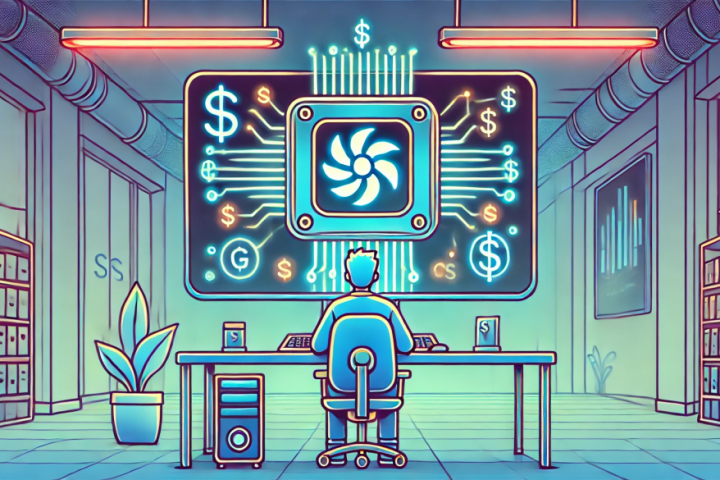Stay ahead of the curve with our daily and weekly newsletters, bringing you the latest updates and exclusive insights on the AI industry. Discover More
At the TED AI conference in San Francisco, Noam Brown, a renowned research scientist at OpenAI, captivated the audience with a riveting talk on the future of artificial intelligence. He highlighted OpenAI’s groundbreaking o1 model and its potential to revolutionize industries through strategic reasoning, advanced coding, and scientific research. Brown, the mastermind behind AI systems like Libratus, the poker-playing AI, and CICERO, which mastered the game of Diplomacy, now foresees a future where AI is not just a tool, but a driving force of innovation and decision-making across various sectors.
“The remarkable progress in AI over the past five years can be encapsulated in one word: scale,” Brown started, engaging a spellbound audience of developers, investors, and industry leaders. “Yes, there have been significant advances, but the frontier models of today still rely on the same transformer architecture that was introduced in 2017. The main difference lies in the scale of the data and the compute that goes into it.”
As a key player in OpenAI’s research initiatives, Brown was quick to stress that while scaling models has been instrumental in AI’s progress, it’s time for a paradigm shift. He underscored the need for AI to evolve beyond mere data processing and embrace what he termed as “system two thinking”—a slower, more deliberate form of reasoning that mirrors human problem-solving.
Unraveling the psychology behind AI’s next giant leap: Decoding system two thinking
Highlighting this point, Brown narrated an anecdote from his PhD days when he was developing Libratus, the poker-playing AI that famously outsmarted top human players in 2017.
“Surprisingly, allowing a bot to think for just 20 seconds in a hand of poker yielded the same performance boost as scaling up the model by 100,000x and training it for 100,000 times longer,” Brown revealed. “When I saw this result, I was convinced it was a bug. For the first three years of my PhD, I had managed to scale up these models by 100x. I was proud of that work. I had authored multiple papers on how to achieve that scaling, but I quickly realized that all that would be overshadowed by this scaling up of system two thinking.”
Brown introduced system two thinking as the antidote to the limitations of traditional scaling. This concept, popularized by psychologist Daniel Kahneman in his book Thinking, Fast and Slow, refers to a slower, more deliberate mode of thought that humans employ for solving complex problems. Brown is convinced that integrating this approach into AI models could lead to significant performance improvements without necessitating exponentially more data or computing power.
He recalled how allowing Libratus to think for 20 seconds before making decisions had a profound impact, equating it to scaling the model by 100,000x. “The results were astounding,” Brown said, demonstrating how businesses could achieve superior outcomes with fewer resources by focusing on system two thinking.
A peek inside OpenAI’s o1: The game-changing model that takes time to think
Brown’s talk comes on the heels of the launch of OpenAI’s o1 series models, which incorporate system two thinking into AI. Unveiled in September 2024, these models are engineered to process information more meticulously than their predecessors, making them perfect for complex tasks in areas like scientific research, coding, and strategic decision-making.
“We’re no longer limited to just scaling up the system one training. Now we can also scale up the system two thinking, and the exciting part about scaling up in this direction is that it’s largely unexplored,” Brown elucidated. “This isn’t a revolution that’s 10 years away or even two years away. It’s a revolution that’s unfolding right now.”
The o1 models have already shown impressive performance in various benchmarks. For instance, in a qualifying exam for the International Mathematics Olympiad, the o1 model achieved an 83% accuracy rate—a significant jump from the 13% scored by OpenAI’s GPT-4o. Brown pointed out that the ability to reason through complex mathematical formulas and scientific data makes the o1 model particularly valuable for industries that depend on data-driven decision-making.
The business rationale for slower AI: Why patience is a virtue in enterprise solutions
For businesses, OpenAI’s o1 model offers benefits beyond academic performance. Brown emphasized that scaling system two thinking could enhance decision-making processes in industries like healthcare, energy, and finance. He used cancer treatment as an example, asking the audience, “Raise your hand if you would be willing to pay more than $1 for a new cancer treatment… How about $1,000? How about a million dollars?”
Brown suggested that the o1 model could assist researchers in accelerating data collection and analysis, enabling them to concentrate on interpreting results and formulating new hypotheses. In energy, he noted that the model could expedite the development of more efficient solar panels, potentially leading to breakthroughs in renewable energy.
He acknowledged the skepticism about slower AI models. “When I mention this to people, a common response that I get is that people might not be willing to wait around for a few minutes to get a response, or pay a few dollars to get an answer to the question,” he said. But for the most critical problems, he argued, that cost is well worth it.
Silicon Valley’s new AI race: Why processing power isn’t the be-all and end-all
OpenAI’s shift toward system two thinking could redefine the competitive landscape for AI, especially in enterprise applications. While most current models are optimized for speed, the deliberate reasoning process behind o1 could offer businesses more accurate insights, particularly in industries like finance and healthcare.
In the tech sector, where giants like Google and Meta are heavily investing in AI, OpenAI’s focus on deep reasoning sets it apart. Google’s Gemini AI, for instance, is optimized for multimodal tasks, but it remains to be seen how it will stack up against OpenAI’s models in terms of problem-solving capabilities.
That said, the cost of implementing o1 could limit its widespread adoption. The model is slower and more expensive to run than previous versions. Reports indicate that the o1-preview model costs $15 per million input tokens and $60 per million output tokens, far more than GPT-4o. Still, for enterprises that need high-accuracy outputs, the investment may be worthwhile.
As Brown wrapped up his talk, he emphasized that AI development is at a pivotal crossroads: “Now we have a new parameter, one where we can scale up system two thinking as well — and we are just at the very beginning of scaling up in this direction.”







